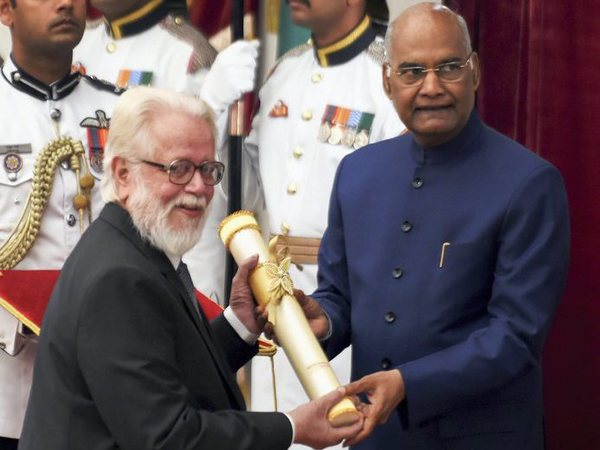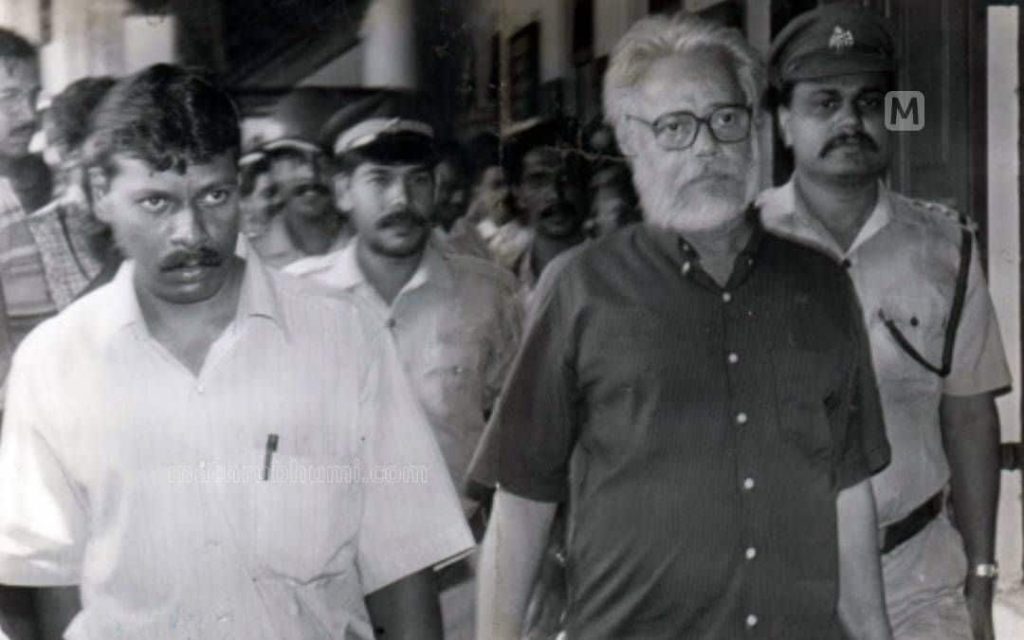ISRO Scientist Nambi Narayanan is synonymous with India’s recent scientific accomplishments in the Chandrayaan-3 Mission. In a similar way to Oppenheimer’s, Nambi Narayanan’s impressive journey contributed immensely to India’s space programme and scientific landscape. Interestingly, both Narayan and Oppenheimer are involved in espionage cases. Here’s a look at his life, education, career, and the intriguing controversies that surround him.
Contents
Who is Dr.Nambi Narayan?
ISRO Scientist Nambi Narayanan built Vikram LM, the first Indian spacecraft to land on the south pole of the moon, during the Chandrayaan-3 mission.
Narayanan’s association with ISRO commenced in 1966. His 35-year tenure witnessed collaborations with prominent Indian scientists such as Satish Dhawan, Vikram Sarabhai, Dr. APJ Abdul Kalam, and U.R. Rao.
The creation of the Vikas rocket engine for the Indian space programme is among Nambi’s most notable accomplishments.
Dr.Nambi Narayanan: Little-Known Facts
- In 2019, he was honoured with the Padma Bhushan, India’s third highest civilian honour, by the President of India for developing the Vikas rocket engine.

- Dr.Nambi Narayanan and another scientist, D. Sasikumaran, were accused of being spies who transferred drawings and documents of rocket engines worth millions to Pakistan via two Maldivian women, Mariam Rasheeda and Fauziyya Hassan, who were suspected to be spies.
- The charges were dropped in 1996, but the case left a lasting impact.
- His autobiography, “Ormakalude Bhramanapatham,” released in 2017, disclosed details of the ISRO espionage case, revealing instances of torture endured in the early 1990s.
- In 2018, R. Madhavan was signed to play ISRO Scientist Nambi Narayanan in the film Rocketry: The Nambi Effect, which was based on Nambi’s life and released on July 1, 2022.

Also Read: How To Become A Scientist In ISRO?
What’s Nambi Narayanan’s Story?
Nambi Narayanan’s Story of Scientific Discoveries Began when he secured a NASA fellowship in 1969, which led him to Princeton University, where he specialised in chemical rocket propulsion. Returning to India, he introduced liquid propellant motors, revolutionizing a field dominated by solid motors.
His tenure at ISRO witnessed groundbreaking achievements, including the invention of liquid fuel rockets in the 1970s and the development of the Vikas engine, pivotal for ISRO’s rockets like PSLV and GSLV.
Career at ISRO: Dr.Nambi Narayanan’s career trajectory exemplifies passion and purpose. India was just getting started in space exploration when he joined ISRO. As an expression of his genius, he developed groundbreaking technologies that boosted India’s space programme.
- He invented liquid fuel rockets in the 1970s. He knew India would need liquid-fueled engines for its upcoming civilian space missions.
- It was Nambi who invented liquid-propellant motors after building the 600-kg thrust engine.
- The cryogenics division (low-temperature behaviour and production) was his responsibility.
- It was Narayanan and his team that developed the Vikas engine, which is used by ISRO for many of its rockets, including the Polar Satellite Launch Vehicle (PSLV) and Geosynchronous Satellite Launch Vehicle (GSLV)
Must Read: Indian Scientists Who Changed the World
Controversy Around Dr.Nambi Narayanan
It all started in 1994. Nambi Narayanan, the man in charge of ISRO’s cryogenic engine project, didn’t know his life was going to change forever.
Narayanan was accused of being a spy, who transferred drawings and documents of rocket engines to Pakistan via two Maldivian women, Mariam Rasheeda and Fauziyya Hassan, who were suspected to be spies.

He was in judicial custody for 11 days. It turned into an espionage case.
He claimed a US-backed conspiracy due to India’s cryogenic technology advancements.
Background Context
(In the 1990s, ISRO was working on the PSLV rocket, which could launch farther and carry heavier satellites but required a cryogenic engine for propulsion. As a result, the US objected to an agreement India had made for cryogenic technology with a Russian agency. Later, India intended to create the technology on its own. Nambi claimed he was falsely implicated in a plot backed by the US to hinder India’s efforts to develop a cryogenic engine.)
Years later, he received compensation for false implications, with the Kerala High Court awarding him Rs 10 lakh. The Supreme Court’s intervention resulted in a compensation of Rs 50 lakh and an investigation against the Kerala police.
Also Read: 8 Wild Stories About J. Robert Oppenheimer: Father of the Atomic Bomb
Dr. Nambi Narayanan Education Background
He completed his schooling at the Higher Secondary School, Nagercoil. He received a Bachelor of Technology in Mechanical Engineering from Thiagarajar College of Engineering, Madurai.
He was sent to Princeton University on deputation at the Government of India’s expense in 1969. He completed his master’s programme there in chemical rocket propulsion under Professor Luigi Crocco. He returned to India with expertise in liquid propulsion at a time when Indian rocketry was still solely dependent on solid propellants.
He has claimed that he had to educate Sarabhai on liquid propulsion technology in his book.
Dr. Nambi Narayanan’s story shows resilience, and innovation. India’s space efforts would not be the same without his unwavering spirit in the face of adversity. If you want to read more such informative blogs on trending topics, then stay connected with Leverage Edu.
 One app for all your study abroad needs
One app for all your study abroad needs














